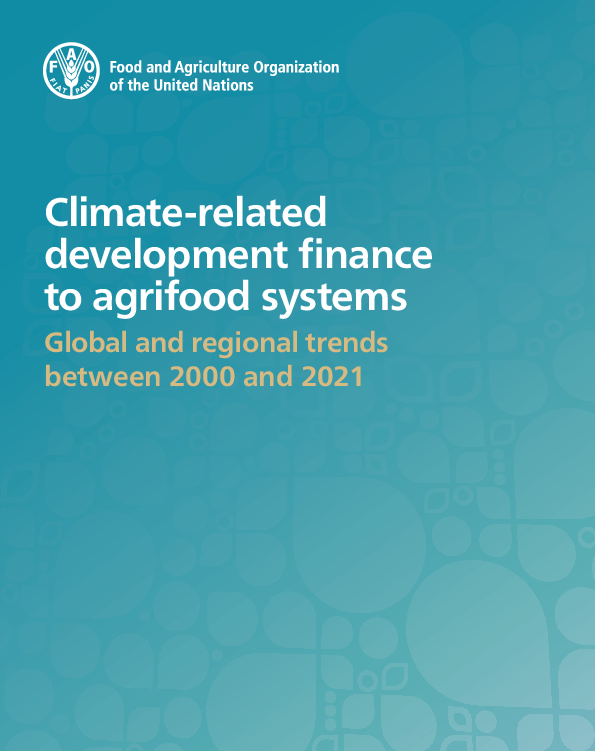- Share this article
- Subscribe to our newsletter
Climate-related development finance to agrifood systems
The amount of climate finance flowing to agrifood systems is strikingly low and continues to diminish compared to global climate finance flows, the report Climate-related development finance to agrifood systems warns. It was published by the Food and Agriculture Organization of the United Nations (FAO) in December 2023.
Climate finance refers to local, national or transnational financing – drawn from public, private and alternative sources of financing – that seeks to support mitigation and adaptation actions to address climate change.
Between 2000 and 2021, climate-related development financial support for agrifood systems amounted to USD 183 billion, with more than half of the funding delivered after 2016. However, in 2021, contributions plummeted to USD 19 billion, a 12 per cent decline compared to 2020.
The most affected region was Asia, with a sharp drop of -44 per cent compared to 2020. Africa and Europe experienced a mild increase of 4 per cent, while Latin America and the Caribbean saw a modest 6 per cent rise.
Although there has been an overall global increasing trend in absolute terms since 2000, doubling from USD 9 billion allocated in 2010 to USD 19 billion in 2021, the growth rate of climate-related development finance towards agrifood systems falls significantly short of the average growth rate of three to four times observed in climate-related development finance overall.
Climate-related development finance going to the transport sector, for example, has increased almost four-fold in the same period.
Amid worsening climate impacts and slow progress on reducing greenhouse gases, embracing sustainable agrifood systems practices – covering production, distribution and consumption – can help nations adapt, build resilience and cut greenhouse gas emissions while ensuring food security and protecting biodiversity.
The report mentions that according to a recent analysis from the Climate Policy Initiative, only 4 per cent of global climate finance went to agrifood systems between 2019 and 2020. To transform agrifood systems and achieve not only climate action but all the Sustainable Development Goals (SDGs), nations would need to mobilise about USD 680 billion a year until 2030.
In 2021, bilateral resource providers (entities or countries that provide financial support or resources directly to another specific country or entity) were the primary contributors to climate-related development finance for agrifood systems, making up 59 per cent, while multilateral providers contributed 35 per cent, and the private sector a modest 5 per cent.
Sub-Saharan Africa was the primary recipient of financial support for climate-related initiatives in agrifood systems. The region secured a significant 53 per cent of these funds, primarily from bilateral donors, notably Germany and the European Union.
(FAO/ile)
Read more and download the report on the FAO website





Add a comment
Be the First to Comment